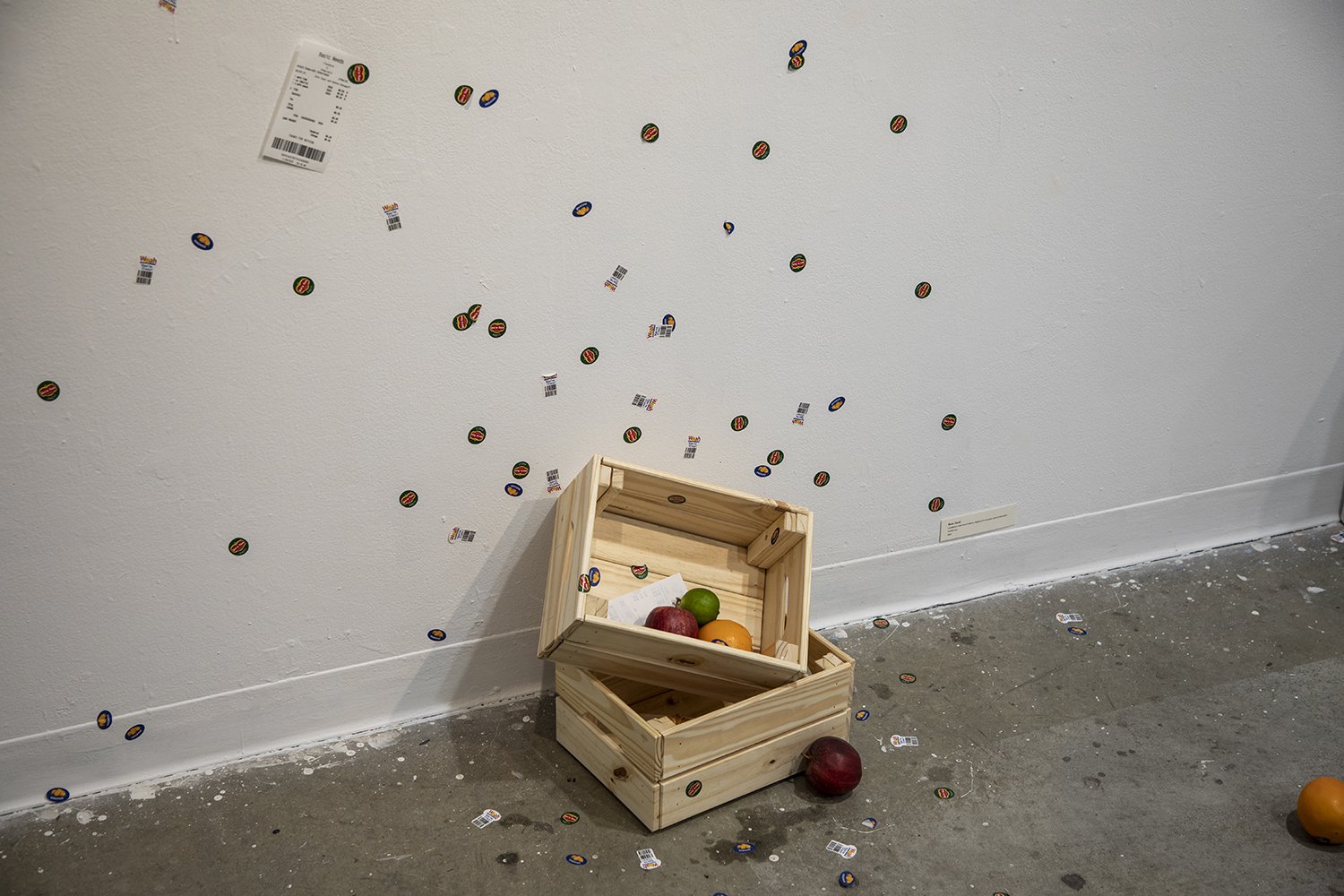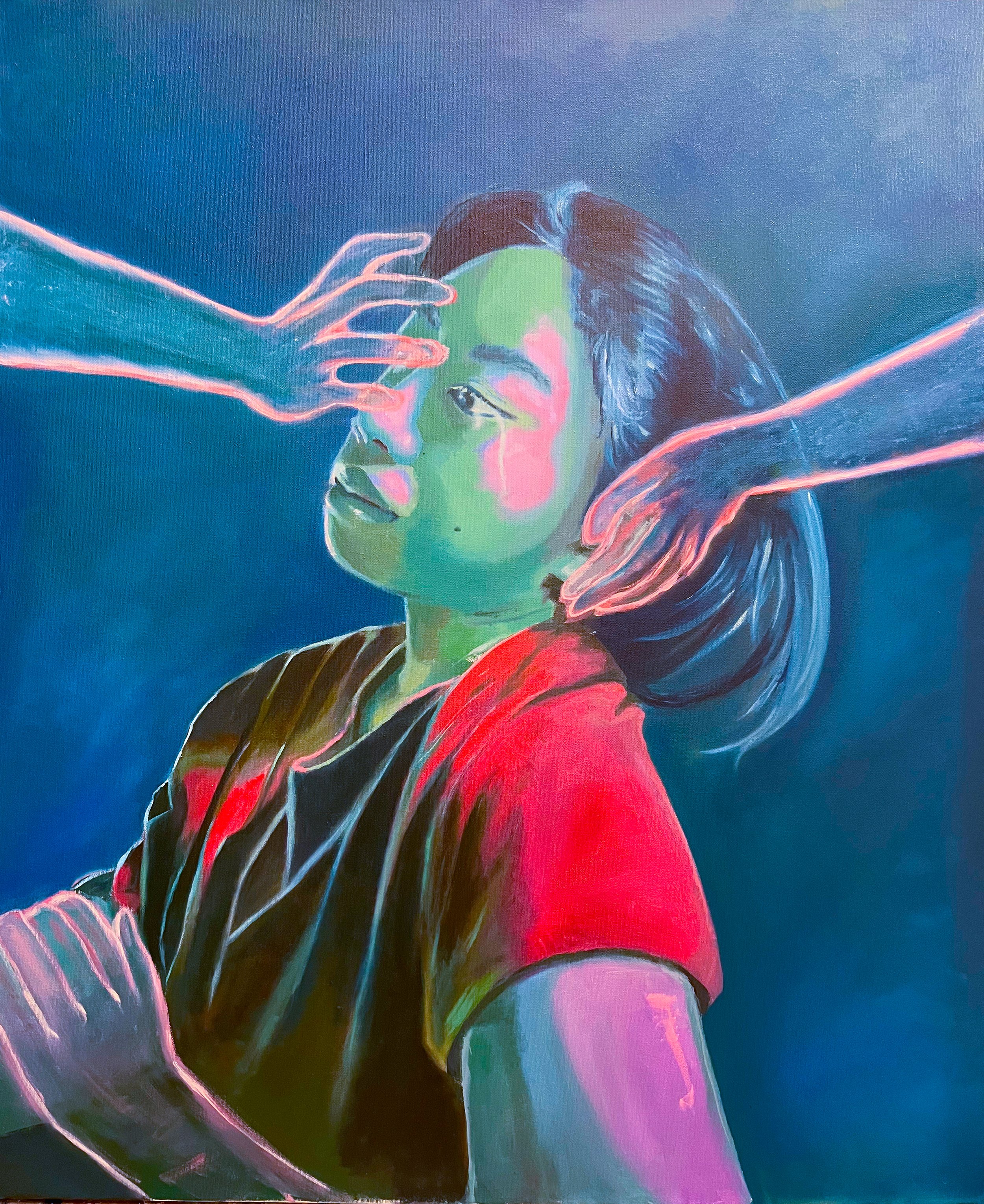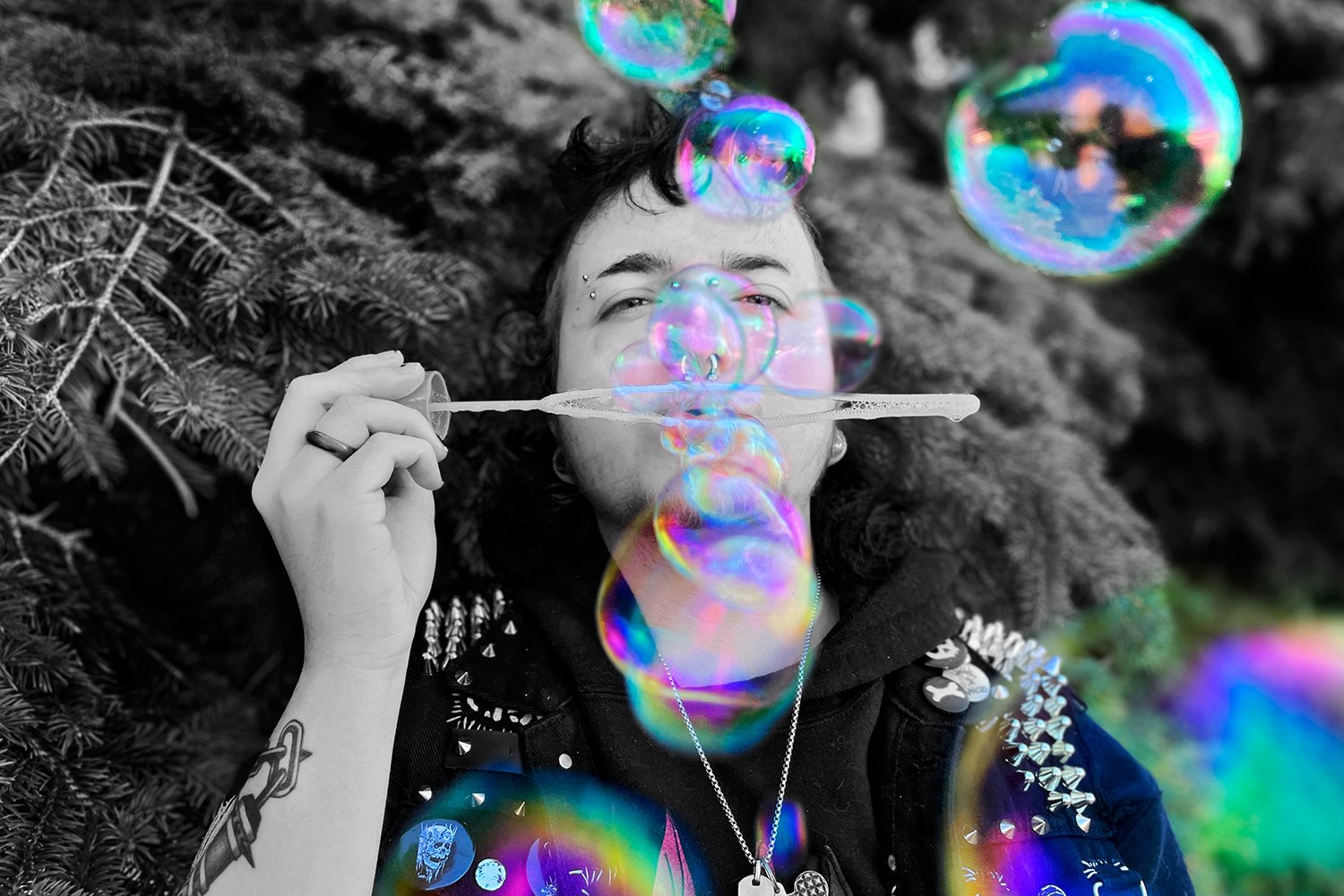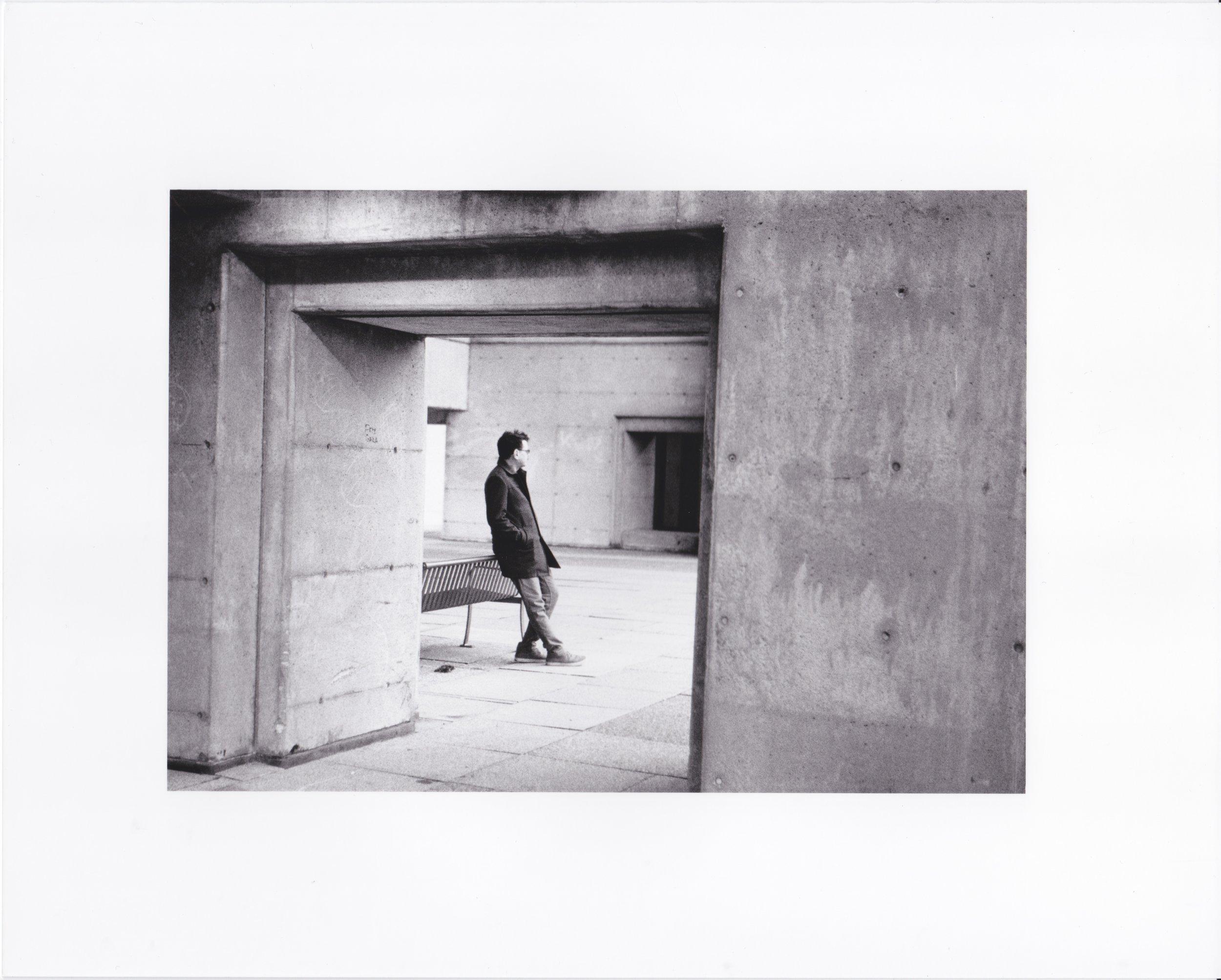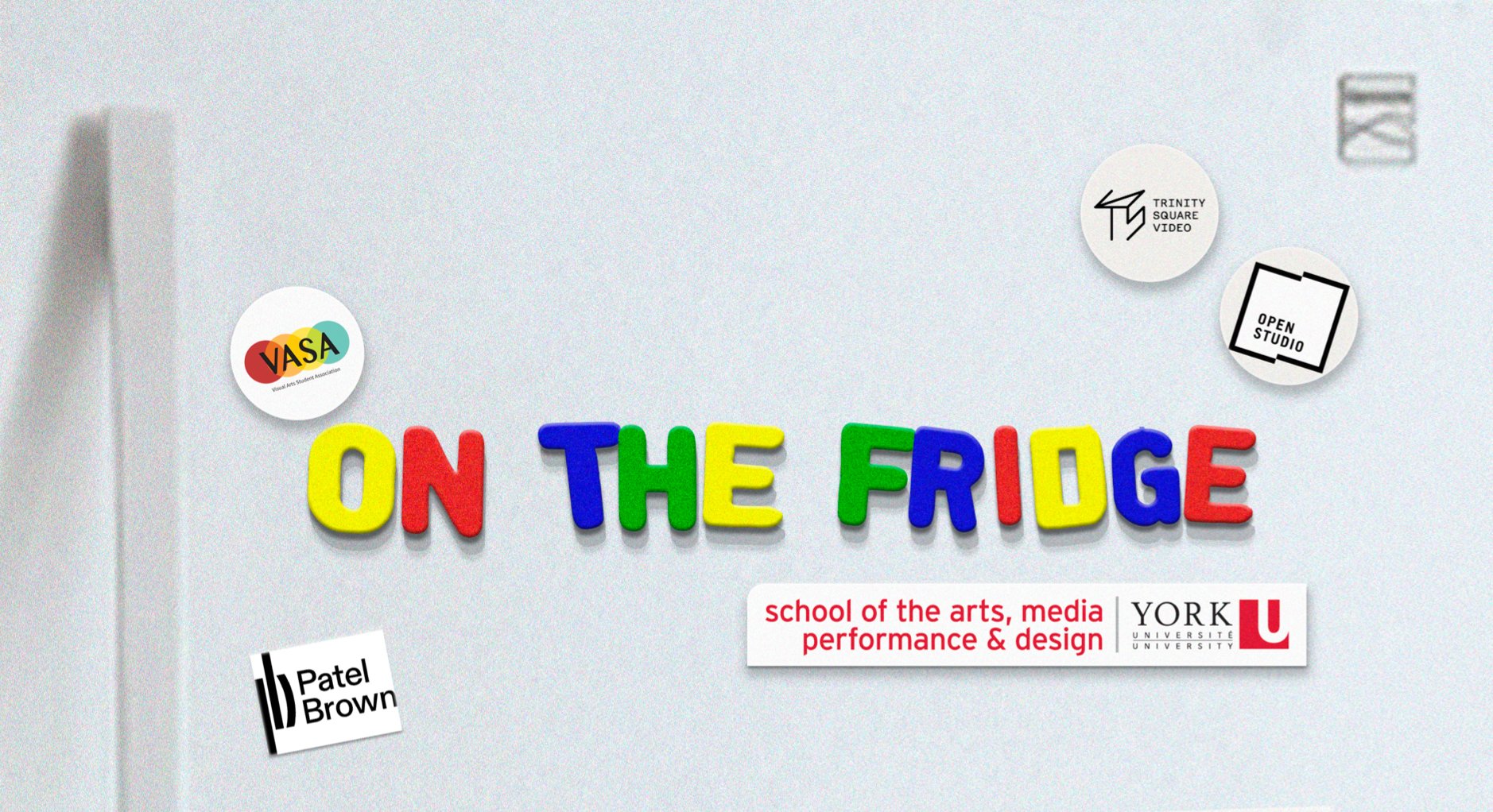
2024 VISUAL ART & ART HISTORY AWARDS
DEAN’S PURCHASE PRIZE
Acting AMPD Dean Michael Darroch selected one work from Open House to purchase and permanently showcase in the Dean’s Office.
AGYU SPOTLIGHT AWARDS
Sponsored and juried by the AGYU, this award presents a $300 prize to 3 VAAH recipients.
PRINT MEDIA AWARDS
PAINTING AWARDS
SCULPTURE AWARDS
DRAWING AWARDS
TIME-BASED AWARDS
PHOTOGRAPHY AWARDS
ART HISTORY AWARDS
SENIOR ART HISTORY ESSAY AWARD: MICHELLE SHEV
Encounters with Queen Christina's Kunstkammer: An Unconventional Feminine Perspective on Power and Eroticism in Art (for ARTH3400 A - Cabinets of Curiosities - Dr. Leslie Korrick)
Inside the grand halls, as I delved into her world, it became evident that this space was more than just a repository of treasures; it was an embodiment of Christina's life. Her inheritance from her father, Gustav II Adolf, placed her in a challenging position. The rigid Swedish society of her time, bound by the religious unity of Swedish Lutheranism, gave little room for exploration and rebellion. Yet, Christina was anything but conventional. Raised with the education of a prince, she bore the spirit and ambitions that extended far beyond the limitations.
AND
Forsaken Autonomy: Exploring Women's Struggle in Lynn Hershman Leeson's 'Lorna' (for ARTH 3999 – New Media Art Histories – Dr. Marissa Largo)
The idea of an online identity was new, and not well understood. Leeson began her practice by sitting down in a closet, and speaking to her camera. Finding it therapeutic, Leeson developed alter egos while finding ways to bring up and cope with trauma from her past. One of these many personalities, Lorna, meaning forsaken, was able to manifest themselves into an interactive space. Transferring her private experiences to the plane of art, raising the creation and development of the personalities of fictional characters to the rank of art, Lorna opened a new stage by using media technologies to explore the interaction process and identity, which has enriched the possibilities of how this piece can be approached. It emphasizes the relevance of Hershman’s issues of the relationship between us and the medium, entanglement in new types of dependencies, and the diversification of centers of power.
PATEL BROWN COMMISSION AWARD: BRIAN GINTHER
Authors Without Artists: Web-Weaving’s Social Media and Circulation Based Art Practice (for ARTH 3999 – New Media Art Histories – Dr. Marissa Largo)
As I scroll through the archives of Marcel Duchamp’s work, a question pops into my head. What kind of art would this man make in the age of social media? Now this question is speculative in nature, and albeit a bit silly, but at the heart of it holds intense implications to the world of art. Duchamp was one of the leading names in a big shift in the art world where art became harder to define. As artists and art historians, we find ourselves in another Duchamp situation as social media has created another shift, maybe even a type of revolution, in the way art is circulated and evaluated. There is much to be said about many art practices centralized to the internet, but I will be looking at one in particular: web weaving. Web weaving is an art practice centralized on Tumblr.com composed of juxtaposing images and text next to each other within a specific theme or subject matter. I believe this art practice to be a good entrance point into evaluating the shift I mentioned and the implications it holds for both new media art, but also the relationship between art and authorship. Therefore, I will be exploring: what is the relationship between the artistic practice of web weaving, authorship, and the act of curation as artwork?
AND
A New Type of Cowboy A Review of Arezu Salamzadeh’s No Place (2023) (for ARTH 4310 – Dr. Dan Adler)
I have always found myself enraptured with the Western aesthetic, but dissuaded from the Western media. The movies and stories produced in this setting always left me with a sour taste as their intense misogyny, the deification of toxic masculinity, perpetuated racism, and objectification never sat right. But the aesthetic? That was like a dream. Denim and leather, ropes and tassels, star sheriff badges and long-toed boots, all tied together with arch-rimmed hats donning an air of authority. It saddened me that such a gorgeous aesthetic was so wrapped up in these stories that only ever functioned to put white cis men on top of the world. Although these stories exhibited themselves as straight and masculine, an underbelly of homoeroticism and genderqueerness lurks in the subtext. This is exactly what Arezu Salamzadeh’s immersive art exhibit explores.
Donning my own cowboy hat, tasselled denim jacket, and gold cowboy collar tips, I make my way out to Mississauga’s Bradley Museum, a house seemingly in the middle of a woodlot surrounded by other buildings of unknown purpose. I find the sign pointing to No Place, and so I walk along a wooden ramp to enter. From there, I am led to the back two rooms with gold-painted trees adorning the entrances. Now in the back of this small house almost knit into the surrounding trees, I am transported to a new kind of southwest.
ART HISTORY ESSAY AWARD: SIAH MCTAVISH
Lingering Legacies: Queen's Park Equestrian Monument as Remnants of Colonial State Body (for ARTH 2560: Renaissance Art and Architecture – Dr. Leslie Korrick)
Easily mistakable as a Renaissance equestrian monument to the unknowing eye, Queen's Park's King Edward VII distinctively lacks the excessive ornamental details that a Venetian humanist sculptor would incorporate to intrinsically honour white antiquity. Where sculptural details of Donatello's Gattamelata featured Renaissance and Graeco-Roman decorum on saddle, helmet, and pedestal, Brock's Equestrian Monument of King Edward VII feels sterile in its shifted focus on a regality amongst the legislative territory. The pedestal is smooth aside from one band of design, and although Donatello's equestrian monument forefronted the iconographical reclamation King Edward VII follows, the decorated qualities of Gattamelata 's fonn make it feel less serious when placed visually in contrast to Brock's bronze marker of contemporary Canadian control. Perhaps this is a part of what makes the lingering lesson - not legacy - of the statue so much more eerie in a multicultural urban hub such as Toronto. It is a stone cold, proud representation of "successful" colonial conquest which Canada inevitably functions off of both in subliminal, iconographical control (that's you, Edward) as much as historical fact. Still, I viewed Edward surrounded by just-citizen tourists, by elderly couples with cameras or young ones with iPhones taking selfies, and all I could wonder is: do they know the truth? I know the answer, and this is exactly the lingering embodiment that colonization succeeded in, and will continue to if we so let it.
ART HISTORY ESSAY AWARD: STEPHANIE PUGH
The Digital Rebirth of Dadaism and Existentialist Video Art Amongst Gen-Z Teens: TikTok as an Ironic Medium for New Media Art. (for ARTH 3999 – New Media Art Histories – Dr. Marissa Largo)
So, what are the implications of Dadaism's digital resuscitation? What does the exploration of existentialist themes on TikTok mean for the study of contemporary life, art history, and new media art? Well, from my research, I can state that TikTok is used as a dynamic and collaborative art medium for young Gen-Z artists. There is clear proof that the app allows for the facilitation of expressing philosophical ideas through accessible and highly personalized video and sound formats. The impact of Dadaism's digital revival and the exploration of existential themes on TikTok go beyond the confines of art history as we know it today. TikTok's cultural and generational significance, serving as an open-source platform for artistic expression, highlights its pivotal role in shaping the narratives of contemporary teenagers.
C MAGAZINE 2-YEAR SUBSCRIPTION: EMILY HORTON
Rooted in Process and Flourishing: A Review of Altered States (or Hollowing Caves with Feathers of Art) (for ARTH 4310 – Dr. Dan Adler)
In the words of Kelsie Haas: “The translator must read the original poem and respond to it as a lover when she reaches across the barrier to realize the 6 poem. But this love can never extend fully. The poet cannot carry the original poem, with all of its nuanced language intact, into the translated language”. Liu’s work reads like an attempt at translating the first print, and despite the labour that goes into the process, the second print in this diptych does not express the same emotion as the first - not exactly, at least. The culture, the exact method of expression that the dreamy, outlandish terrarium conveys in Liu’s print is missing from the second half of Lost in Translation. Form is sacrificed to communicate emotion, and emotion is sacrificed to communicate story, and the end result is a conversation that has no hope of being understood perfectly by either party. I was fortunate enough to speak with Liu about the relationship between these two prints, and she told me that she created the diptych first as one image, one plate, and then she broke it in half. The process of etching (whether with aquatint, sugar lift or otherwise), of mark making with acid, has a slow, organic violence to it. If the etching of the copper plate is like a deer’s corpse giving way to rot and decay, Liu’s action of snapping the plate in half is the wolf’s teeth to the jugular. While the erosion of meaning in the act of translation is not apparent to anyone but the translators present, the weight of it, the emotion, bites into any speaker in the conversation: That gradual disintegration has a heavy, devouring, and unignorable impact.
C MAGAZINE 2-YEAR SUBSCRIPTION: KIMBERLY CHEUNG
The Intersectional Queer Feminist Body in the Hands of the Future: An Analysis of Janelle Monáe’s Dirty Computer Emotion Picture (for ARTH 3999 – New Media Art Histories – Dr. Marissa Largo)
Sadie Plant’s (1997) book Zeros + Ones lays out a pathway for the feminine body to use the masculinized space of the digital to her own liberation, carving a space for her identity and prosperity. These ideas are evident in the world of Dirty Computer as it is a woman who has carved her space within politics and technology to create the facility and institution that Jane57821 finds herself in. However, the institution is operated outside the intersectional lens, and therefore targeting marginalized bodies. Monáe is a formidable voice in the scene of contemporary afrofuturism. Dirty Computer is no exception, Jane57821’s identity is rooted in black culture and is visualized through dance, hip-hop music and wardrobe that incorporates traditional African patterns and designs. Kodwo Eshun elaborates on the function of science fiction not as a predicted utopic future but rather the art of rewriting the past and present and then projecting those ideals into the future. Moreover, afrofuturism is the art of leaving behind the forced modernity of the black body and crafting a future without past marginalization. I argue that while Monáe had created a world within these parameters, they also suggested that using digital space and advancing technology without an intersectional perspective may lead to colonization of the black body once again.
VAAH HONORARIUM: JENNIFER CLAVEAU
Praise and Blame for the Beasts of Burden: A Tale of Two Statues (for ARTH 2560: Renaissance Art and Architecture – Dr. Leslie Korrick)
Looking at how the statue fits in aesthetically, we can recall Erwin Panofsky's comment: "When a man at a horse race watches the animal on which he has put his money, he will associate its performance with his desire that it may win. Only he who simply and wholly abandons himself to the object of his perception will experience it aesthetically." This makes me wonder what the real motives of Henry R. Jackman were when he was brokering the deal for this horse to come to Toronto. One just has to imagine a Toronto mounted police officer walking by the King Edward VII statue to understand its wild and beastly scale. It is dominant and overbearing, supernaturally swelled to the height of the tree tops, decorating the centre of a large cement circle and juxtaposing the natural surroundings of a beautiful leafy-green park environment of grass and trees. If you didn't know the history, it could probably be mistaken for a Renaissance sculpture. Knowing the history, you might find it more fun to imagine future legends about the alien monster who plucked it from another time and dropped it into place. The sheer grandiosity of this presence seems to clash with the conservative history and modest nature of Canadian civic culture. improvement. The streets are well-paved, and lighted with gas; the houses are large and good; the shops excellent. Charles Dickens wrote of Toronto in 1842 "The town itself is full of life and motion, bustle, business and improvement.The streets are well-paved, and lighted with gas; the houses are large and good; the shops excellent...[but] the wild and rabid Toryism of Toronto, is, I speak seriously, appalling.”
YU BOOKSTORE CERTIFICATE: KIGI AMBAIOWEI
Contours of Identity: Intersecting Themes in Sunday School's Artistic Tapestry (for ARTH 4310 – Dr. Dan Adler)
Her melanin-rich feet are in a firm yet graceful en pointe stance on brown hardwood floors. Her toes are wrapped with white bandages directly contrasting the colour of her skin while matching the hue of the wall behind her. This image of her protected toes depicts the beauty and grace of one whose experiences are underwritten by elements of pain and brokenness. She tells us a story of all the places her feet have travelled and of where she is going. This image of the ballerina’s feet is one of the works showcased in “Feels Like Home” by the creative agency Sunday School. Sunday School is a collective founded by a Nigerian Canadian, Josef Adamu which “brings together photographers, videographers, stylists, and models to push the boundaries of visual storytelling within Africa and across the diaspora.” Curated by the Art Gallery of Ontario’s curatorial assistant for arts of global Africa & the diaspora, Emily Croning, the exhibition is warm, and intimate, and captures a sense of fresh hope for the culture.
THE BRENDA HICKS MEMORIAL AWARD
COLIN ARTHURS
The Brenda Hicks Memorial Award was created in honour of Brenda Hicks: a long-service AMPD staff member who passed away suddenly in 2017. She is fondly remembered by all her friends and colleagues in the department of Visual Arts.
There are three things in life: “what you desire, what you believe and what you have to do.” Colin epitomizes all three of these: the desire to produce art; believing in what he is doing; and fulfilling his desires and dreams with his creative talents. (Patrick Legris)










